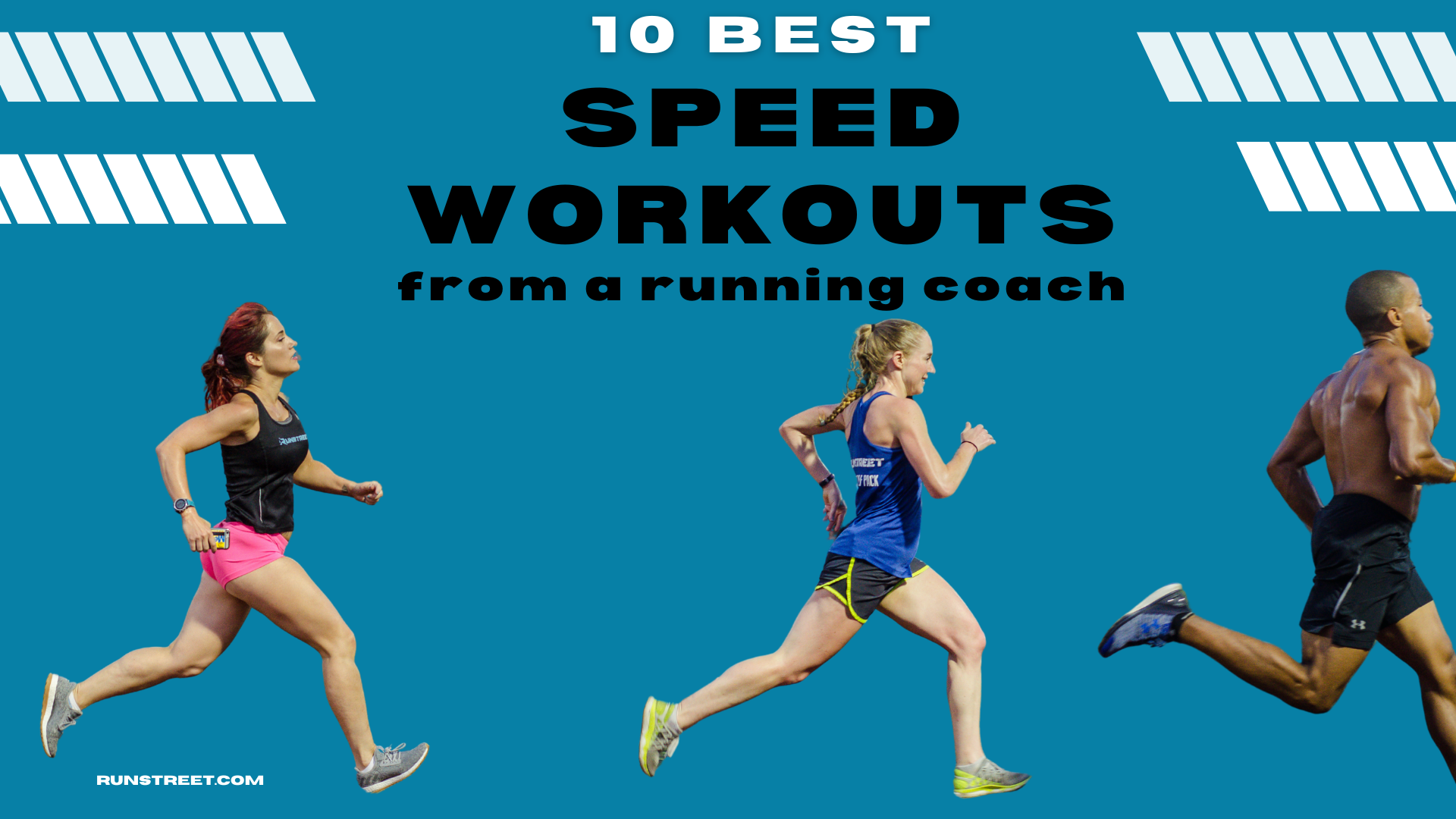3 Speed Workouts You Can Do Anywhere
Photo by Marques Jackson Photography.
By Marnie Kunz, NASM-certified trainer, USATF- RRCA-certified run coach
If you want to get faster and improve as a runner, these speed workouts will help you get there. And the good news is you don’t need to find a track or special place to run. With these running workouts, you can be anywhere — city streets, trails, the beach, or even a treadmill. Also, if you’re a new runner, these speed workouts offer a great way to ease into more intense training. And for more advanced runners, try this speed work to mix up your routine and add more variety and intensity to your running program.
Benefits of Speed Workouts
Speed training can help you get faster, improve your running form and efficiency, and boost your muscle mass and metabolism. Speed workouts also have anti-aging benefits as they increase your type II muscle fibers (which normally decline with age), according to the American Council on Exercise. Whether you want to run a faster 5K or improve your fitness level, speed training is a great - and free - way to do it. You can do these sample speed training workouts to get started with a speed program.
Fartleks
Fartleks involve short bursts of speed.
Fartleks is Swedish for “speed play,” and fartleks offer a flexible speed workout for all levels of runners. To run fartleks, add in some short bursts of speed to a regular-paced run. This helps improve your leg strength and speed while giving you the flexibility to run anywhere and adjust the number of speed intervals. A great starter fartlek workout is to run for 10 minutes to warm up, then run hard, at about 80 percent effort level, for 1 minute, then run 3 minutes at a relaxed pace and repeat. Here is a sample fartlek workout:
Sample Fartleks Workout
10 minutes relaxed pace running to warm up
1 minute fast at 80 percent effort level
3 minutes relaxed pace running
Repeat for a total of 8 speed and 8 relaxed intervals.
Run 6 minutes slow to cool down.
Stretch.
You can adjust these fartlek speed workouts to your training level. So if you are currently working your way up to running 30 minutes, for instance, do 4 speed intervals in your fartlek workout instead of 8. If you are training for a long-distance race like a marathon, on the other hand, add more fartleks to make your total run time longer.
Tempo Run
A tempo run is a form of speed workout that improves your body’s aerobic efficiency through a sustained effort. For tempo runs, you will be running at an increased pace for a longer duration than intervals or fartleks but you will not be going as fast. On the effort scale, your tempo run should feel somewhere between 60% and 80% effort. Your tempo run pace should be something you can sustain for up to an hour of running.
In contrast with other speed workouts such as fartleks, your tempo run will be at your aerobic threshold, which means you can maintain the pace for longer. Tempo runs are a great way to improve running speed for racing, as they help your body adjust to running faster for prolonged periods.
For your first tempo run, you should run at least 20 minutes at your tempo pace, between 60% and 80% effort level or similar to your 10K race pace. For more help with how to do a tempo run, check out our tempo running guide.
Sample Tempo Run
For a starter tempo run, warm up by running 10 minutes at your relaxed run pace, about 20% to 40% effort level. Stretch. Then begin your tempo run. Run for 20 minutes at 60-80% effort level or your 10K race pace. Cool down by running for 10 minutes slowly, at a relaxed pace. Stretch.
If you are training for long-distance races like a marathon or half marathon, you can build your tempo run up to an hour of running at your tempo pace.
Intervals
This 400-Meter Speed Workout is a great beginner-friendly workout.
An interval workout includes segments of intense bursts of speed mixed with recovery time. Intervals are the backbone of speed workouts and come in many distances and pace options. You'll go at a faster pace than your regular base runs when you do intervals.
Interval training is often done in the form of track workouts but you can do intervals on a road, treadmill, or field as well. You do not need a track to do interval work and can measure your intervals with a GPS running app like Strava or Nike Run Club, or a GPS watch.
Check out our post on Interval Training for Beginners for a complete run-down on interval training.
Sample Intervals Workout
Jog 1 mile (or 1600 meters) at a relaxed pace, about 20-40% effort level, to warm up.
Run .25 of a mile (400 meters) at a fast pace, about 80 percent effort level.
Run .25 of a mile (400 meters) at a slow, easy pace, about 20-40% effort level, for active recovery.
Repeat for a total of 6 reps - with 6 fast intervals and 6 recovery segments. Aim to maintain the same pace for all of your speed intervals. Consistency is key.
Run .5 mile (800 meters) at a relaxed pace for a cooldown.
Stretch
This interval workout is great for beginners and anyone who is just getting back into speedwork. For advanced runners, you can add more intervals to build your speed endurance by doing a total of 10 intervals.
If you are training for longer distance races, like a half marathon or marathon, you can add more distance to your intervals, doing .5 mile (800-meter) intervals or 1-mile intervals. For mile intervals - also called mile repeats, run at your goal race pace for your upcoming race.
Related Post: How to Do Mile Repeats to Get Faster
How Often to Do Speed Workouts
If you are just starting to do speed workouts, add one a week to your regular running program. After a month of speed training, if you really want to do more high intensity training, you can do two speed workouts a week.
Make sure you incorporate easy runs and rest days into your training so you never do two speed sessions in a row and have enough recovery time. This allows your body to recover fully between hard training sessions so you don't experience too much fatigue or risk overtraining.
Related Post: Are You Overtraining?
Check out the Runstreet Training Center to get personalized speed workouts and a running program designed by a certified run coach.
Have you tried speed workouts to improve your running? Comment below with your favorite ones, or tag @Runstreet on Instagram to share your training and get cheered on. Happy running to you!😊
Resources: Runstreet Customized Running Training Plans
Related Posts: How to Do Tempo Runs, 5 Running Workouts to Get Faster, 16 Benefits of Running, Interval Training for Beginners
Marnie Kunz is a NASM-certified personal trainer and USATF- and RRCA-certified running coach based in Brooklyn, NY. Marnie likes helping people get and stay active to enjoy a better quality of life. When she’s not doing fitness things, Marnie enjoys exploring with her dog, a mischievous rescue Akita.




